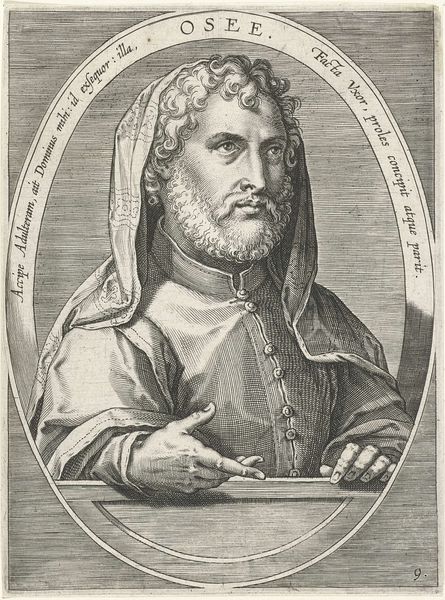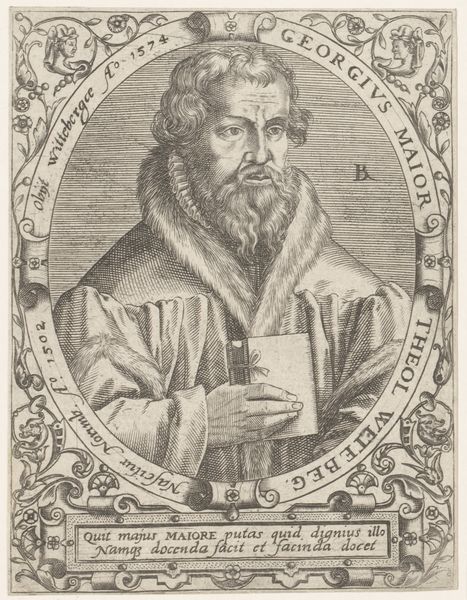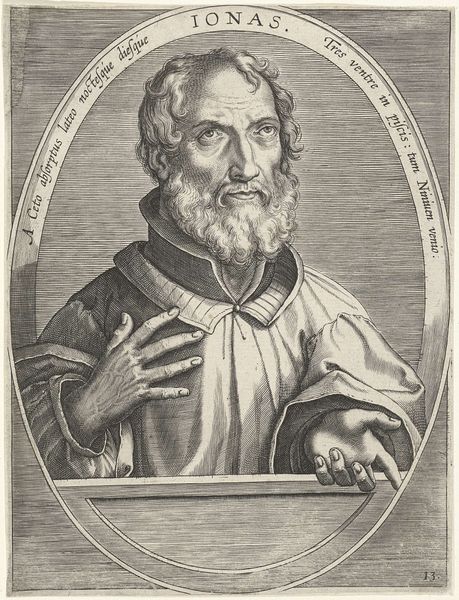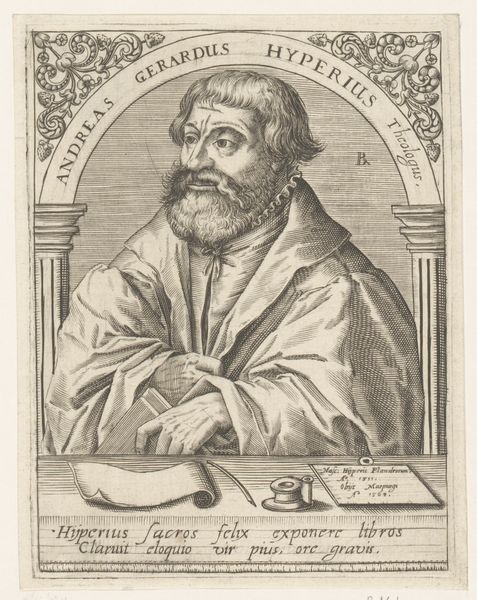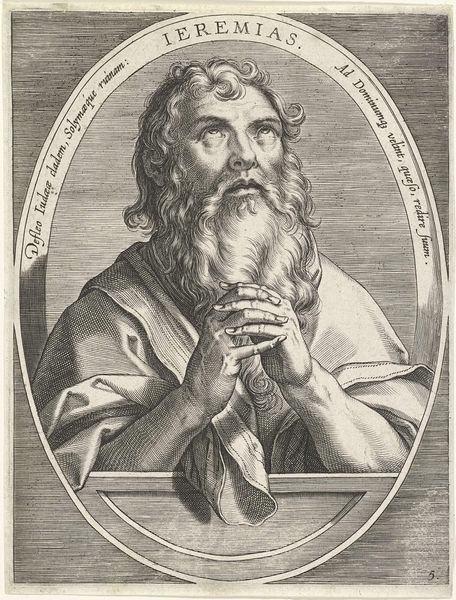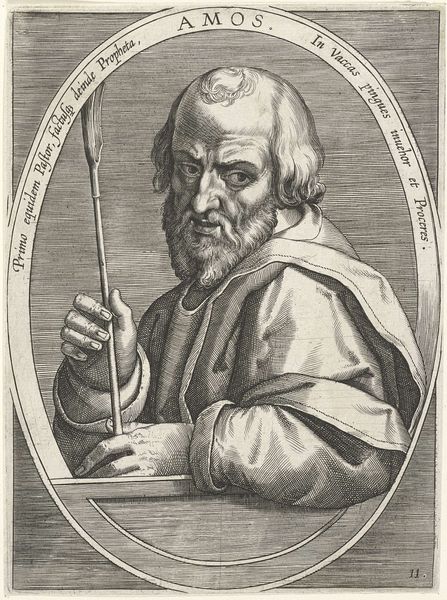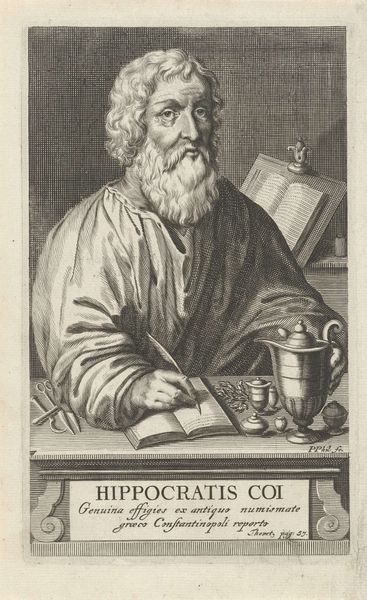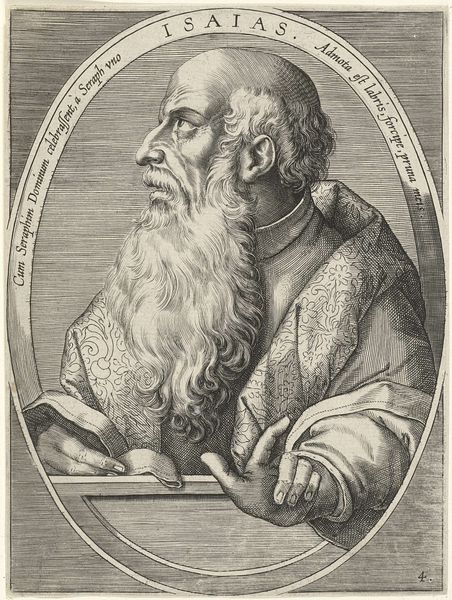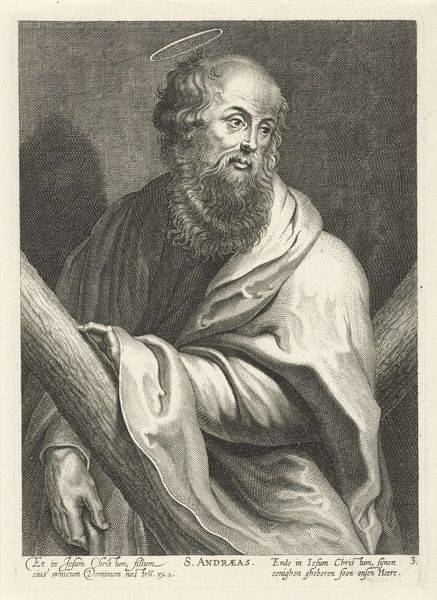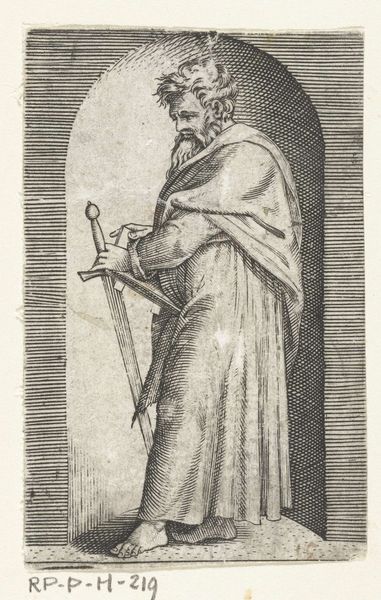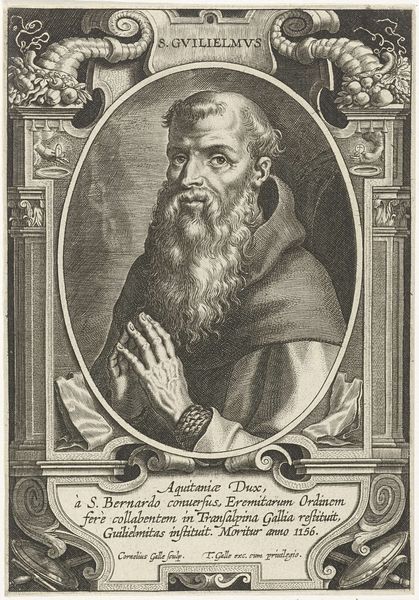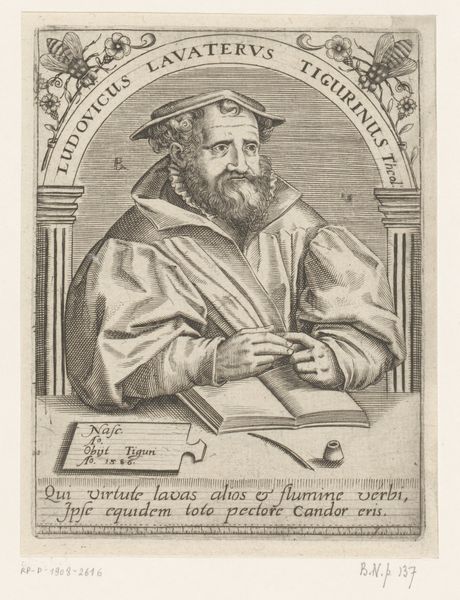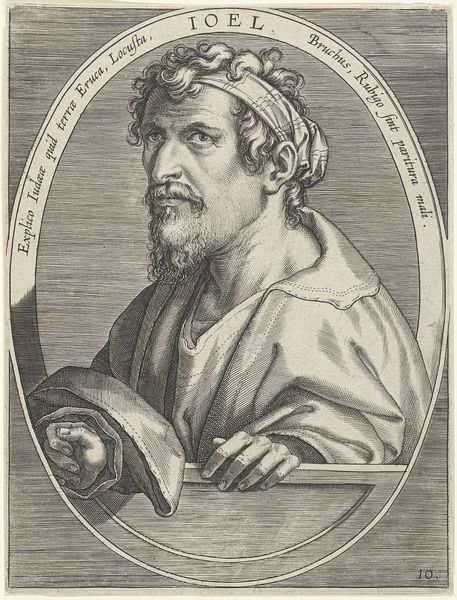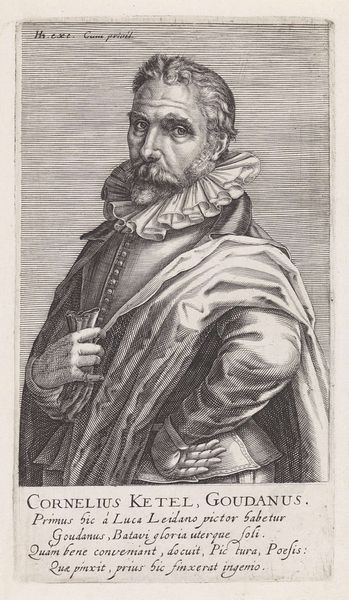
Dimensions: height 175 mm, width 135 mm
Copyright: Rijks Museum: Open Domain
Curator: This engraving, titled "Baruch," was created in 1613 by Cornelis Galle I. It resides here at the Rijksmuseum. It’s a compelling image, isn't it? Editor: It is. My first impression is a sense of austere wisdom. The hatching work conveys such a deep intensity. It’s thought-provoking, a somber depiction of its subject framed by dense layers of symbolism. Curator: Absolutely. What strikes me is the remarkable skill demonstrated in the printmaking process. Consider the labor and tooling involved, cutting lines into the copperplate to produce such nuanced details and textures, making an item that would presumably circulate and reproduce rapidly. How does that interplay between meticulous handwork and mass production speak to you? Editor: That tension is key. Engravings like this facilitated the spread of ideas and imagery, playing a crucial role in shaping public perception during periods of intense religious and political upheaval. This image also resonates with discourses of gender, knowledge, and power. Is this image trying to empower those excluded by society? Curator: It's interesting that you brought that up! I am wondering who the prints were created for and circulated to, if it empowered an elite through exclusivity. Let’s consider the economic context. The price of copper, the artisan's wage, distribution costs. These factors shaped the consumption and dissemination of these images, reinforcing social hierarchies. What do you think the texts embedded in the oval around Baruch convey? Editor: These words seem to cast him in the mold of a prophet. “I preach of future times,” which makes me ponder the role of religious imagery during periods of colonialism. Whose voices get amplified and whose are systematically suppressed? How can we approach this image not as a static object, but as part of a network of power? Curator: Those networks included Galle’s own workshop. These prints were produced, consumed, and commodified within a system dependent on artistic skill but constrained by market forces. A truly complex and multilayered object of cultural production. Editor: Precisely. So, perhaps we've opened a window to examining "Baruch" as less about some static representation of one biblical person, and more of the many complicated considerations of knowledge, production, and faith.
Comments
No comments
Be the first to comment and join the conversation on the ultimate creative platform.
